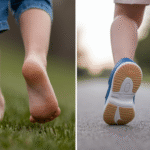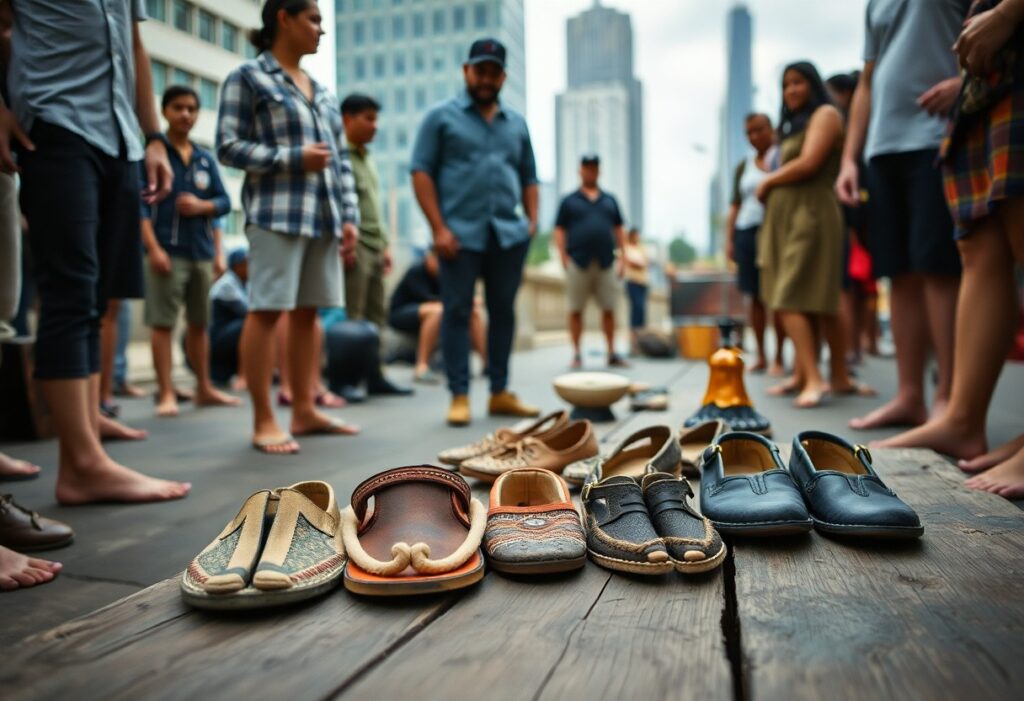
Diving into the realm of <a href="https://myshoesfinder.com/barefoot-footwear-merging-user-searches-and-biomechanics/">barefoot footwear</a> through the insightful perspective of cultural anthropology reveals captivating stories that bridge the rich traditions of Aboriginal cultures with the dynamic urban environment of today. As you explore this fascinating transformation, you will discover how cultural beliefs and practices surrounding minimalist footwear influence our perceptions of comfort, our intrinsic connection to the earth, and new avenues for personal expression. Gaining an understanding of these elements not only broadens your knowledge but also encourages a reevaluation of how the footwear choices you make can reflect deeper cultural significance and your own personal identity.
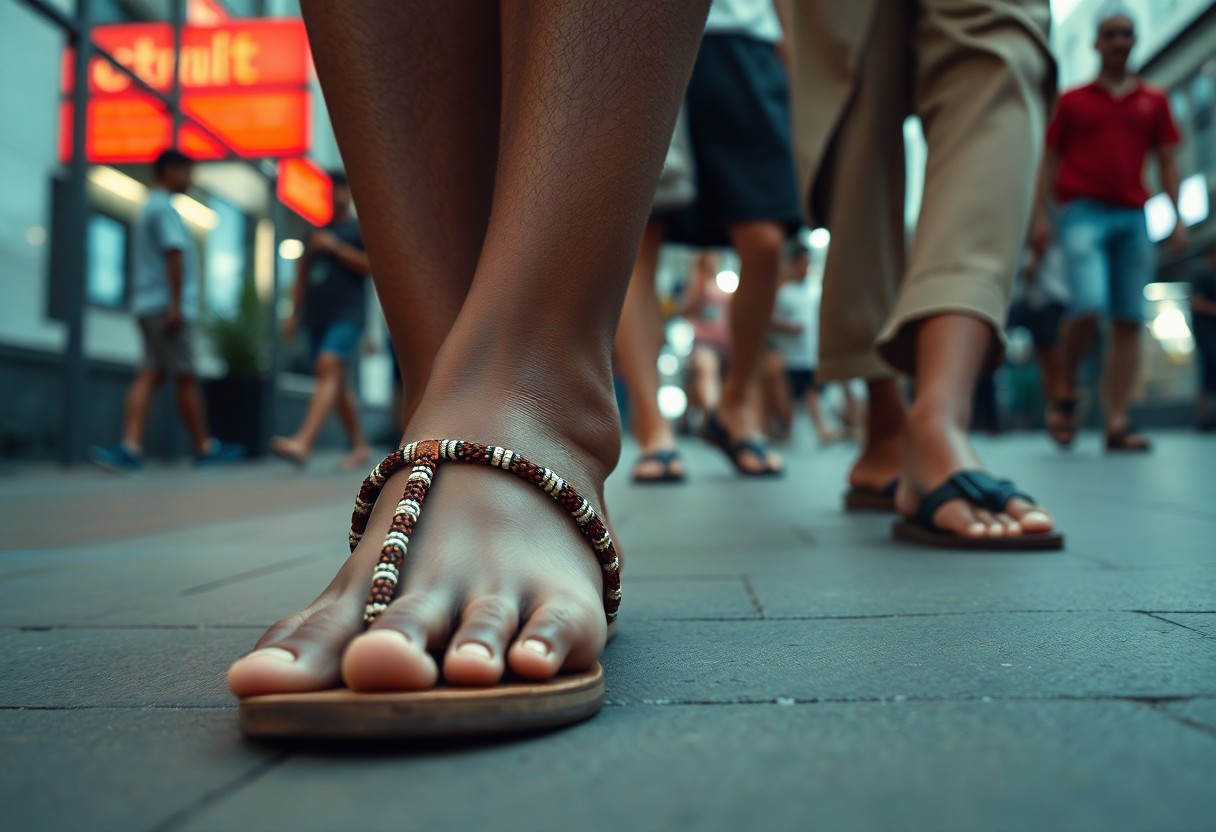
Discover the Link Between Ancient Footwear Practices and Modern Innovations
The contemporary footwear market showcases a vibrant blend that intertwines ancient traditions with cutting-edge innovations, nurturing a growing appreciation for barefoot footwear. This journey pays homage to traditional indigenous techniques while cleverly adapting them to meet the needs of your modern lifestyle. By recognizing the significance of historical practices, you can uncover an exciting fusion of cultural respect and practical aesthetics in your everyday footwear selections, enhancing your personal style while honoring the legacy of the past.
Examining Indigenous Foot Conditioning Techniques Against Modern Practices
Across the globe, indigenous cultures have employed specific conditioning techniques designed to strengthen their feet for navigating diverse terrains. Techniques such as walking barefoot over various surfaces have reinforced the arches and muscles in ways that many contemporary interpretations often overlook. Even though modern minimalist footwear aims to replicate these advantages, they seldom provide the authentic experience of direct contact with the earth, which is essential for developing natural foot strength and flexibility. The contrast between these traditional practices and modern methods highlights the importance of understanding the roots of foot health and the benefits of returning to more natural ways of movement.
Tracing the Evolution of Military Footwear: From Roman Caligae to Contemporary Tactical Boots
The story of military footwear is a captivating chronicle of adaptation and innovation, evolving from the robust Roman caligae, designed for durability and traction, to today’s tactical boots that seamlessly combine protection, agility, and comfort. Analyzing these transformations reveals a fundamental truth: in challenging environments, functionality is paramount, necessitating gear that enhances both endurance and mobility for soldiers.
The Roman caligae exemplified a sophisticated solution to military demands, constructed from tough leather with an open-toe design for optimal ventilation. This ancient footwear featured thick soles that effectively absorbed shock while providing crucial traction, essential in combat situations. Fast forward to today, tactical boots are crafted using advanced materials such as Kevlar and waterproof membranes, significantly enhancing durability and performance. These modern designs incorporate padded collars and state-of-the-art cushioning systems that mitigate injuries during demanding military operations. By appreciating the lineage of military footwear, you can clearly discern how historical styles have paved the way for contemporary innovations, merging heritage, practicality, and cutting-edge technology to meet the rigorous needs of today’s warriors.
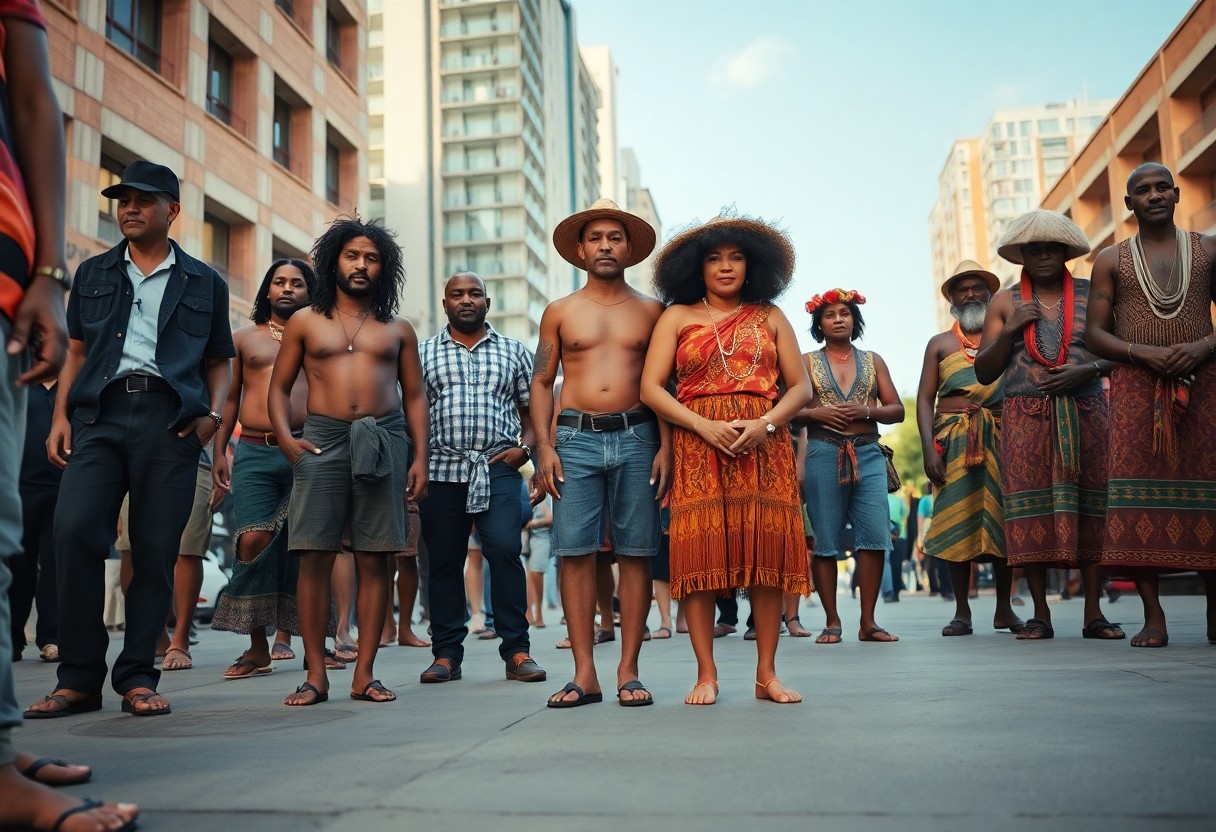
Analyzing the Urban-Rural Footwear Gap: Cultural and Practical Differences
The disparities in footwear selections between urban and rural environments highlight significant cultural and practical distinctions. In urban settings, there is often a strong emphasis on style and brand identity, while rural areas may prioritize practicality and durability. As barefoot footwear gains traction, urban dwellers increasingly view its minimalist design as a fashion statement as well as a pathway to perceived health benefits. Conversely, individuals in rural settings may remain skeptical, influenced by traditional norms and the specific demands of their environments.
Unraveling Emerging Trends in Urban Adoption of Barefoot Footwear
In urban areas, a noticeable trend towards the acceptance of barefoot footwear is emerging, with adoption rates steadily climbing over the past decade. This shift is driven by various factors, including heightened health awareness, a growing interest in natural movement, and the influence of fitness trends such as yoga and running. Recent surveys indicate that approximately 35% of urban residents have actively sought out barefoot-style shoes, reflecting a cultural transition towards embracing innovative approaches to body mechanics.
Investigating Gender-Based Barriers in Barefoot Footwear Adoption: Who is Leading the Trend?
Gender dynamics play a crucial role in the acceptance of barefoot footwear, with differing motivations influencing men’s and women’s choices. Women often face greater societal pressures related to fashion and aesthetics, which may impede their willingness to adopt minimalist styles. In contrast, men may be more motivated by the performance and health benefits of these shoes, resulting in higher adoption rates among male demographics.
A deeper examination of the gendered aspects of barefoot footwear adoption reveals that societal expectations significantly affect women’s choices. Women frequently navigate a complex landscape where ideals of beauty and fashion overshadow practical health advantages. For instance, research shows that approximately 45% of men in urban areas are inclined towards barefoot shoes, compared to only 30% of women. Female consumers often grapple with the balance between aesthetics and functionality, leading them to be more cautious in evaluating the visual appeal of barefoot footwear against their requirements for comfort and support. By empowering women through targeted awareness campaigns and showcasing fashionable barefoot options, the willingness to embrace this trend could increase, potentially transforming urban footwear narratives and fostering inclusivity across gender lines.
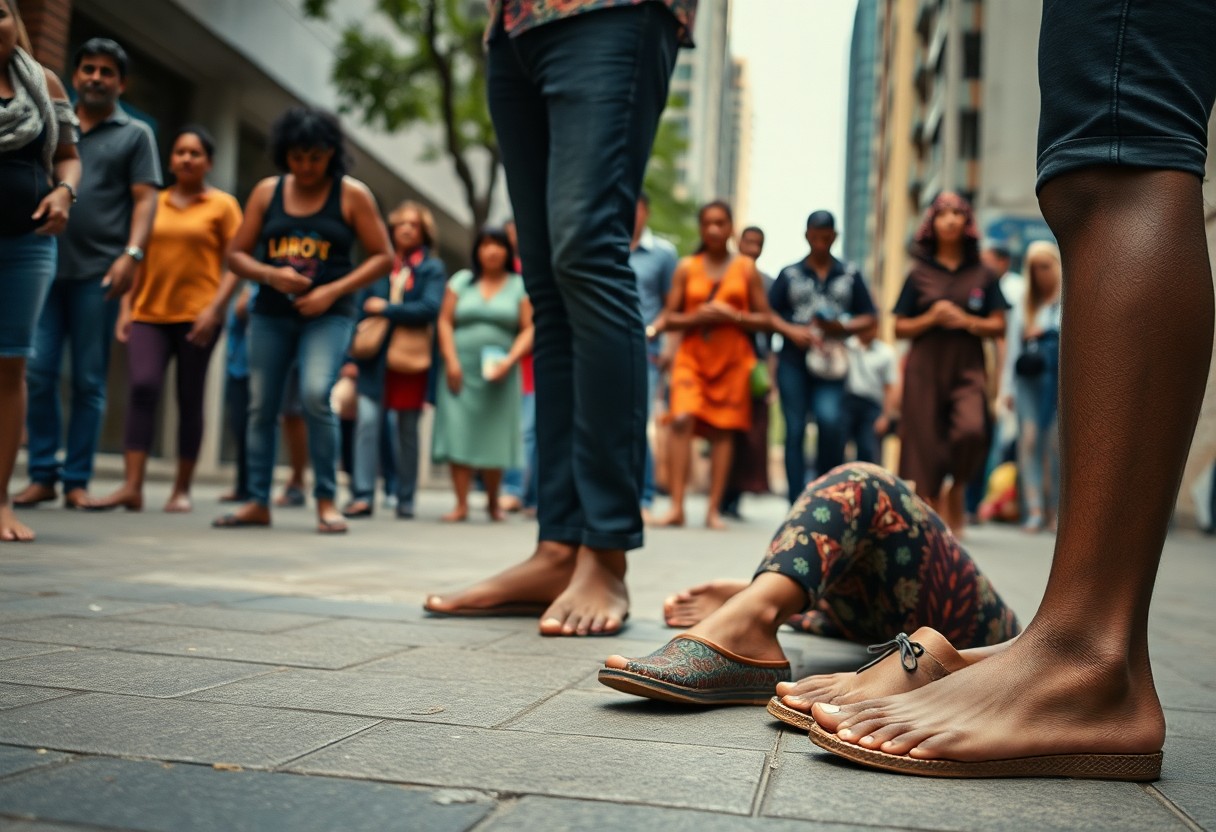
Innovative Technologies Shaping the Future of Barefoot Footwear
As the demand for barefoot footwear continues to rise, groundbreaking technological advancements are set to revolutionize your approach to comfort and performance. Innovations in materials science and personalized fitting techniques will not only enhance functionality but also tailor your walking experience, merging traditional wisdom with modern design principles. You are entering an exciting era where your footwear becomes as unique as the journeys you undertake, leading to improved comfort and performance.
Revolutionizing Customization with 3D Scanning for an Ideal Fit
The emergence of 3D scanning technology is transforming the customization of barefoot footwear, enabling a precise fit that adapts to your unique foot shape. Instead of settling for generic sizes, your shoes can be meticulously crafted to match the contours of your feet, significantly enhancing comfort while reducing the risk of injury. Custom-fit options will elevate your walking experience, making barefoot shoes more accessible to individuals with diverse foot shapes and sizes, thus catering to a broader audience.
Embedding Smart Sensors: The Cutting Edge of Footwear Technology
The integration of smart sensors into barefoot footwear is poised to reshape the industry by embedding technology directly into the soles. These innovative features can monitor various metrics, such as distance traveled and foot pressure, providing you with valuable insights to optimize your walking or running routines. With real-time data at your fingertips, you can adjust your activities to enhance performance and ensure safety.
Imagine having access to real-time analytics during your walks or runs. Smart sensors can track your gait, alerting you to any irregularities that could lead to injury. Some forward-thinking brands are already developing footwear capable of analyzing your foot’s impact across different terrains, offering personalized recommendations for style or cushioning adjustments on the go. This groundbreaking integration combines smart technology with the traditional barefoot philosophy, ensuring that you maintain a natural stride while leveraging the latest advancements in wearable tech. The potential for enhancing sports performance, rehabilitation, and everyday comfort is boundless, fundamentally redefining how you interact with your environment with every step you take.
Reflecting on the Evolution of Barefoot Footwear
Your investigation into the cultural anthropology surrounding barefoot footwear unveils a rich narrative interwoven from the threads of Aboriginal traditions to modern urban practices. By embracing the principles of natural movement and a deep connection to the earth, you gain insights into how this footwear philosophy transcends mere fashion, profoundly impacting lifestyle choices and community values. As you contemplate these diverse perspectives, consider how your footwear selections can embody and promote a deeper understanding of cultural heritage and adaptability in today’s fast-paced world.
The Article Cultural Anthropology of Barefoot Footwear: From Aboriginal Traditions to Modern Urban Adoption appeared first on My Shoes Finder
The Article Cultural Anthropology of Barefoot Footwear: Traditions to Today Was Found On https://limitsofstrategy.com


